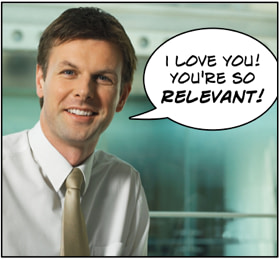By Cathy Moore
Business leaders love their L&D departments! Well, maybe 20 percent of them do.
“Survey after survey has repeatedly shown that the proportion of business leaders who are satisfied with their learning function’s performance is around 20 percent,” write the authors of a recent article in The European Business Review.
 “Last year, a survey found that more than half of managers believe that employee performance would not change if their company’s learning function were eliminated,” Shlomo Ben-Hur and Nik Kinley tell us in the article. “If corporate learning is to retain what remains of its credibility, something needs to change and it needs to change fast.”
“Last year, a survey found that more than half of managers believe that employee performance would not change if their company’s learning function were eliminated,” Shlomo Ben-Hur and Nik Kinley tell us in the article. “If corporate learning is to retain what remains of its credibility, something needs to change and it needs to change fast.”
But what, exactly, should change? Here are some of the authors’ suggestions:
- Focus on behavior change, not learning
- Act like a performance consultant, not a manufacturer of training
- Rigorously evaluate how your projects improve performance
What might this look like in practice? Here are some ideas.
1. Start with a measurable end in mind
Before you design any training, set an observable, measurable goal that describes a specific improvement in business performance that your project will help create. Not “People will be aware of the dangers of computer viruses” but “Intrusions by malware in our systems will decrease 60% by Q4.”
This is the first and most important step of action mapping but is also the step most likely to be skipped. Often the client doesn’t want to commit to anything measurable or can’t clearly describe the performance problem, yet they expect us to forge ahead and crank out training.
My suggestion: Disobey! Swear allegiance to the L&D manifesto. Squeeze a measurable performance goal out of your client to protect your learners from useless training and your job from irrelevancy.
A quick way to get at a goal is to ask the client, “What are you measuring now? What numbers tell you that there’s a problem?” And if they insist that they just want “awareness,” here are some ways to respond.
2. Make sure training is actually the right solution
Walk your client through this flowchart to make sure that you identify the best solution for each aspect of the problem. If you throw training at a problem that can’t be solved through training, you’ll look impressively busy, but the measures that matter won’t change.
3. Use an evaluation method that tells you how to improve
Knowledge assessments and satisfaction surveys don’t show whether your project improved the performance of the business, and they don’t tell you how to do it better next time. Instead, take a look at Robert Brinkerhoff’s Success Case Method. Tom Gram clearly summarizes it for us.
Unlike a flat survey, Brinkerhoff’s method digs deeply into specific cases, examining both learners who succeeded in improving their performance and those who didn’t. As a result, you get a much more detailed picture of what works and what doesn’t, giving you the information you need to create real, visible results. For details, see Brinkerhoff’s book, The Success Case Method: Find Out Quickly What’s Working and What’s Not.
Thanks to Steve Rayson at Kineo for discussing the article and bringing it onto my radar.
Photo: Victor1558
Scenario design toolkit now available
Design challenging scenarios your learners love
- Get the insight you need from the subject matter expert
- Create mini-scenarios and branching scenarios for any format (live or elearning)
It's not just another course!
- Self-paced toolkit, no scheduling hassles
- Interactive decision tools you'll use on your job
- Far more in depth than a live course -- let's really geek out on scenarios!
- Use it to make decisions for any project, with lifetime access










Great post Cathy. thanks for linking back to our discussion on the article. I think you’re absolutely right about the challenges facing L&D’s credibility.
I’d add a step:
when there is a successful outcome – talk about it. L&D teams are not great at highlighting the results when the work yields them. Learn from the marketing team and other business units who’ve honed the skill of proving their worth. This is not a time to be shy. Tell the success stories and encourage more of it. This is in Tom’s summary but thought it was worth bringing to the fore.
Great work as always
Stephen
Stephen, thanks for your comment. I agree, we need to tell every success story, and the story needs to be “Look, we reduced the error rate 67%, saving the company 45 bajillion dollars” and not “Look, 89% of the people who took this training said they enjoyed it!”
Another change I’d like to see are job descriptions that include performance consulting. Many L&D job descriptions that I’ve seen seem to be describing a position in a course factory.
Great article. Glad to see you discussed evaluation. I wanted to add that it’s important to seek out the best measures you can find in terms of surveys or questionnaires that were developed by researchers and gone through a psychometric analysis. It’s easy to create a bias survey without knowing it, so take a moment to Google how to create a high-quality survey for your field.